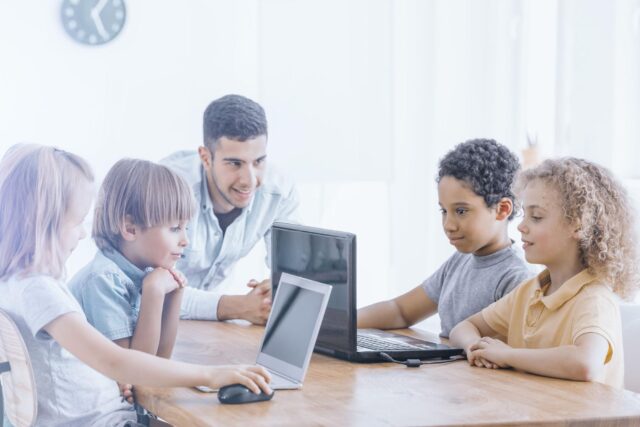In today’s digital age, social media has become a powerful tool for educators. It transcends the traditional classroom setting, allowing teachers to foster connections with students and parents in innovative and meaningful ways. Here’s how social media can enhance communication and engagement in the educational landscape.

Table of Contents
Toggle1. Building a Community
Social media platforms allow teachers to create online communities where students and parents can connect. By establishing a dedicated group on platforms like Facebook or using messaging apps like WhatsApp, educators can facilitate discussions, share resources, and foster a sense of belonging among students and their families. This community atmosphere encourages collaboration and support, both academically and socially.
2. Enhanced Communication
Social media provides a direct line of communication between teachers, students, and parents. Teachers can post updates about class activities, assignments, and important announcements, ensuring that everyone stays informed. This real-time communication can help parents be more involved in their child’s education, making it easier to address questions or concerns as they arise.
3. Showcasing Student Work
Platforms like Instagram and Twitter offer teachers a platform to showcase student achievements and projects. By sharing photos and videos of classroom activities, art projects, or science experiments, teachers can celebrate student success publicly. This recognition not only boosts student morale but also allows parents to take pride in their child’s accomplishments.
4. Sharing Educational Resources
Social media is an excellent medium for sharing educational resources, such as articles, videos, and study tips. Teachers can curate content that aligns with their curriculum and share it with students and parents. This helps reinforce classroom learning and provides parents with tools to support their children’s education at home.
5. Encouraging Parental Involvement
Engaging parents through social media can enhance their involvement in their child’s education. Teachers can create events, volunteer opportunities, or workshops and promote them via social platforms. When parents feel connected and informed, they are more likely to participate actively in school activities and support their children’s learning.
6. Fostering Student Engagement
Students are often more active on social media than traditional communication channels. By integrating social media into the learning process, teachers can create a more engaging and interactive environment. For example, teachers can use polls, quizzes, and discussions on platforms like Twitter or Instagram to encourage student participation and feedback.
7. Professional Development and Networking
Social media is not just for student-teacher-parent communication; it also serves as a platform for professional development. Teachers can connect with colleagues, share best practices, and participate in educational forums and discussions. Networking on platforms like LinkedIn or joining educator groups on Facebook can provide valuable insights and resources to improve teaching strategies.
8. Creating a Supportive Environment
Social media can serve as a platform for students and parents to share experiences, ask questions, and offer support. Teachers can facilitate discussions on various topics, including mental health, study tips, and personal experiences, fostering a supportive community. This open communication can help create a safe space where students feel comfortable expressing their thoughts and concerns.
9. Promoting Events and Activities
Teachers can use social media to promote school events, extracurricular activities, and important dates. Creating an event page on Facebook or posting updates on Instagram can help increase participation and awareness among students and parents. This proactive approach ensures that everyone is informed and excited about upcoming events.
10. Feedback and Improvement
Social media allows teachers to gather feedback from students and parents regarding teaching methods, classroom activities, and school policies. This input can be invaluable for continuous improvement and helps educators adapt their strategies to better meet the needs of their students and their families.
Conclusion
Social media has the potential to transform the way teachers connect with students and parents, fostering a more engaged and collaborative educational environment. By leveraging these platforms for communication, resource sharing, and community building, educators can enhance the overall learning experience for their students. As technology continues to evolve, embracing social media as a tool for connection and engagement will be essential in shaping the future of education.


No responses yet